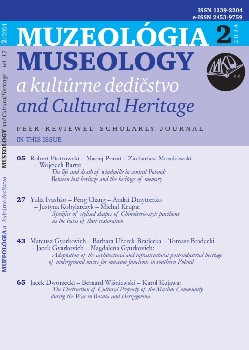The Life and Death of Windmills in Central Poland: Between Lost Heritage and the Heritage of Memory
The Life and Death of Windmills in Central Poland: Between Lost Heritage and the Heritage of Memory
Author(s): Robert Piotrowski, Maciej Prarat, Zachariasz Mosakowski, Wojciech BartzSubject(s): Cultural history, Museology & Heritage Studies, Architecture
Published by: Univerzita Komenského v Bratislave, Filozofická fakulta
Keywords: windmills; industrial heritage; heritage of memory; Poland;
Summary/Abstract: Windmills are one of the most complex human inventions of the pre-industrial era. Making use of wind energy to serve human needs was not only a miracle of architecture and technology: it produced silent witnesses of history – an important part of a rural landscape, local identity and folklore. Thanks to their multiple roles, windmills are useful research objects for scientists in various fields. In Poland the first written records of windmills date from the thirteenth century. Shortly after World War II there were still about 3300 such constructions (many of them still fully operational) despite losses in the war. Today there are around 250 windmills under legal protection (around 70 of which were moved to open-air museums). This figure illustrates the vulnerability and progressive disappearance of Poland’s windmills. Despite the efforts made to protect this heritage, often the only remnants of such objects are the memories people living nearby. These memories join the present with the past, recall people and their work, and preserve the memory of an item. Windmills that have ceased to exist are still present in people’s collective remembering as a sum of their subjective experiences and impressions. In this paper, we decided to combine different approaches to the matter of heritage – both tangible and intangible. We argue for the importance of collecting recollections of ordinary people and interviews with eyewitnesses, as well as examples of institutional or private efforts made to protect windmills, to explain the equal value of both of these methods for preserving memories about the work and skills of millers – that is, the memory of a profession that was once a vital part of cultural identity.
Journal: Muzeológia a kultúrne dedičstvo
- Issue Year: 12/2024
- Issue No: 2
- Page Range: 5-25
- Page Count: 21
- Language: English

